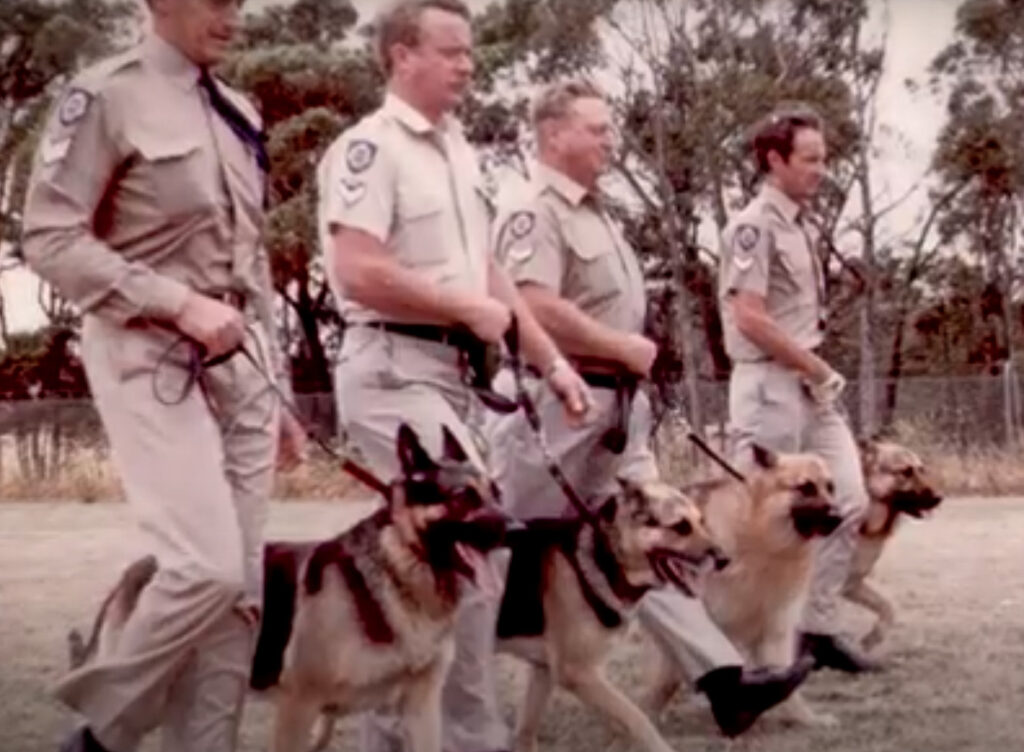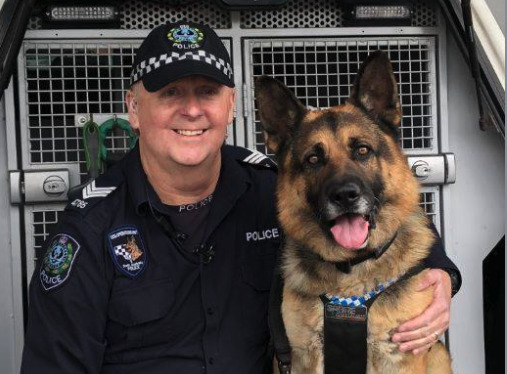It’s a special day at the paw-ffice for the South Australian Police Dog Operations Unit, which unleashed its 50-year anniversary celebrations this morning.
South Australia Police’s (SAPOL) ‘top dogs’ donned party hats, as members reminisced on five decades of assisting the community.
Part of the Special Tasks and Rescue (STAR) Group, the Dog Operations Unit is led by a Senior Sergeant, has two full-time Training/Operations Sergeants and 20 dog handlers.
Deputy Commissioner Linda Williams said the Dog Operations Unit continues to serve an important function within SAPOL, with dogs and handlers highly trained to perform a variety of tasks.

“For 50 years the use of police dogs operationally has seen numerous advantages, as South Australia Police works towards safer communities,” she said.
Available 24/7, the service comprises 13 German Shepherds and 13 Labradors, along with up to five development dogs, across 12 general purpose teams and eight detector dog teams.
“Dog Operations Unit assists the community through delivering services including finding suspects and missing persons,” Operations Manager Senior Sergeant Ryan Johnson said.
“We also use dogs to detect illicit substances to contribute to SAPOL’s Illicit Drug Strategy through harm minimisation. Our dogs are also able to detect explosives, firearms and currency.
“Our handlers are also heavily involved in events and talks, which help the community to understand the role of a dog handler within SAPOL.”
In September 1973, SAPOL sent two members to the United Kingdom to undertake a dog course run by the Staffordshire County Police.
The course concluded after three months and on 30 November 1973 the two handlers, Detective Sergeant Lloyd Morley and First Class Constable Dennis Posgate, returned to Adelaide with police dogs Kaffir and Rebel.

In February 1974, SAPOL received four more dogs: Rex, Sulu, Satan and Tina from the Staffordshire County Police. Inspector George Grayson was seconded to SAPOL from this service to train the four new dogs and handlers, before the course concluded on 15 April 1974.
These dogs were trained in detecting both ground and airborne human scent and in searching for cannabis. Then in 1994 the Unit introduced specialist dedicated drug dogs in response to increasing illicit substance issues within society.
Two handlers, then Senior Constables Peter Crouch and Michael Davies, were selected to undertake a three-month drug detection dog course in Canberra with the Australia Customs Service (now Border Force). The return of these handlers and their Labrador retrievers Zenna and Vashti saw the nucleus of what is now an eight-person strong Specialist Drug Detection team.

In 1998, SAPOL introduced Firearms and Explosive Detection dogs, trained to locate up to 10 explosive odours, along with recently fired firearms and rounds.
The unit’s Labradors are traditionally sourced from an Australian Border Force breeding facility in Melbourne. German Shepherds are sourced from a group of reputable breeders SAPOL has developed relationships with over the years.
“The age they become operational really depends on the dog. Usually our dogs don’t go on a training course prior to 12 months of age,” Senior Sergeant Johnson explained.
“Any time after that they could potentially be suitable to undertake a course. Sometimes we have dogs that are over two years of age that get trained up.”

Each dog lives at the home of its handler and becomes a member of the family.
“Since the dogs live with us we actually see them more than anyone else,” Sergeant Peter Crouch explained.
“When we aren’t working they come on holidays with us. They are a big part of the family.
“We form an incredible bond with these dogs, and when they retire, they naturally come home and stay with us.”
The dog teams are based in metropolitan Adelaide, but are able to respond to calls for assistance throughout the state.
“The unit is busy with tasking requests and with an ever-growing population within South Australia, we are seeing an increase in demand,” Senior Sergeant Johnson added.
“The unit also deploys state wide and provides coverage to our rural areas including the West Coast, Far North and Limestone Coast.”


